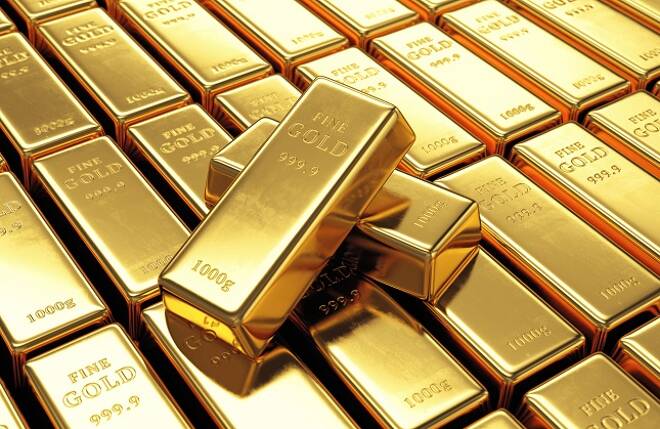Gold, Stuck Between Its Current Situation and Future Prospects
By:
Much has been said recently about where gold should go next. The bullion has been stuck in a downtrend since its August highs above 2,000 USD, but it looks like bulls are starting to be more active again. At least for now.
Inflation Running Hot
Earlier in the month, traders paid attention to US Consumer Price Index (CPI) data, which came out above market estimates. The headline CPI jumped 0.6% month-on-month and 2.6% year-on-year.
That was the most significant month-on-month jump since June 2009 and the biggest yearly jump since August 2018, as the CPI was followed by the Producer Price Index (PPI) which was even higher.
Following the reports, precious metals skyrocketed which means the bearish trend might be over for now.
Inflation is evident everywhere – if you look at oil and copper, which tend to be the best inflationary hedges, both are up very sharply over the last year. Additionally, lumber and grains have gone vertical recently as well.
According to the latest ISM manufacturing index survey, the manufacturing prices paid – also known as the inflation subindex – remain at all-time highs, near 86.0. There are substantial price pressures for manufacturers, which will eventually lead to higher prices for consumers.
Gold Underperforms as the Market Turns Hawkish
Gold should be sought-after in the inflationary environment, but it has been underperforming recently. Why? Well, there are always two sides to each story.
Federal Reserve (Fed) governors have said many times that they are prepared to ignore periods of inflation rising above its 2% threshold without changing their accommodative policy stance. They see these episodes as temporary.
However, markets are now pricing three to four rate hikes over the next two years, which tells us that the Fed will be pushed into action if inflation continues to run above 2%. That should come sooner rather than later.
Present or Future?
What influences gold more? Is it the current rising inflation, or is the market being driven by expectations? Usually, everything that’s known tends to be already priced in. Therefore, markets tend to be driven by expectations most of the time.
That could be the reason why gold has been underperforming recently. All the money printing and inflation are probably priced in, as evident from gold’s rise from 1,400 to 2,000 USD, with investors now being forward-looking. They see one more year of ultra-loose monetary policy, and then the Fed will need to start hiking rates and taper the QE. Both hawkish actions could come even sooner than 2022.
Should this outlook stay in place, the upside for gold is probably limited. On the other hand, if the economic situation worsens again, the Fed might be forced to pump more money into the system, altering the hawkish outlook. In that case, gold would most likely breach the current record highs above 2,000 USD.
Demand Wanes
When it comes to the demand and supply side, it looks like lower gold prices are justified.
The central banks’ demand decreased by nearly 60 percent in 2020, according to the World Gold Council (WGC). In the fourth quarter of 2020 alone, central banks bought a net of 44.8 tons of gold, while it was about 140.7 tons, a year before that.
Additionally, the jewelry market has been hit hard by the pandemic. Last year, the total annual demand for gold pieces was 34 percent less than it was in 2019, which marks a new yearly minimum in history according to observations by the WGC.
Gold will have a tough time going higher should the global economy open for business after the pandemic. Inflation has already risen sharply, but central banks should soon be forced into some hawkish action, which usually means lower prices for precious metals.
For a look at all of today’s economic events, check out our economic calendar.
About the Author
Peter Bukovcontributor
Peter comes from a background in corporate finance which began in 2013 when he completed the Corporate Finance Program at the University of Economics in Bratislava. He’s been actively involved in the market sector since 2008 and got his hands-on experience in trading in 2011.
Advertisement
